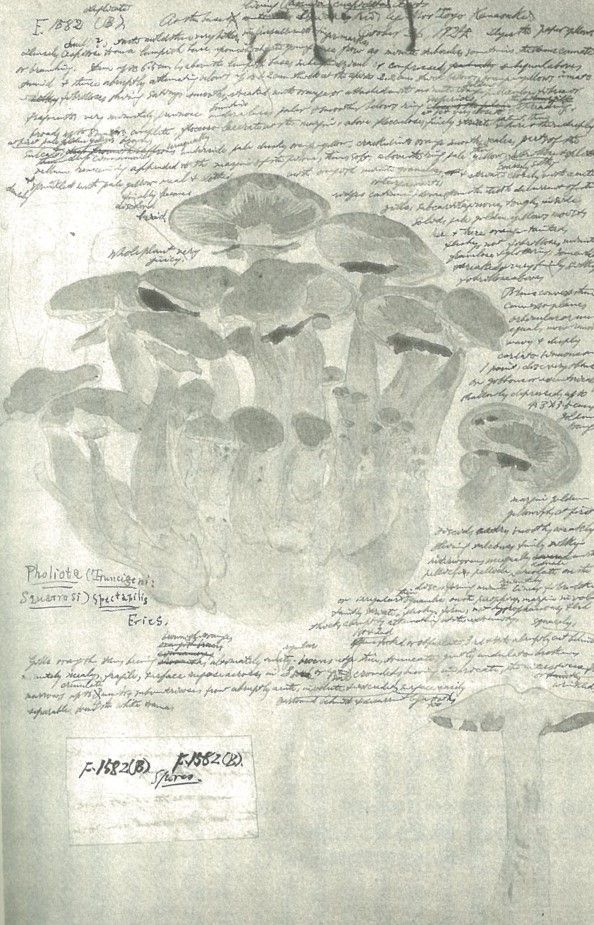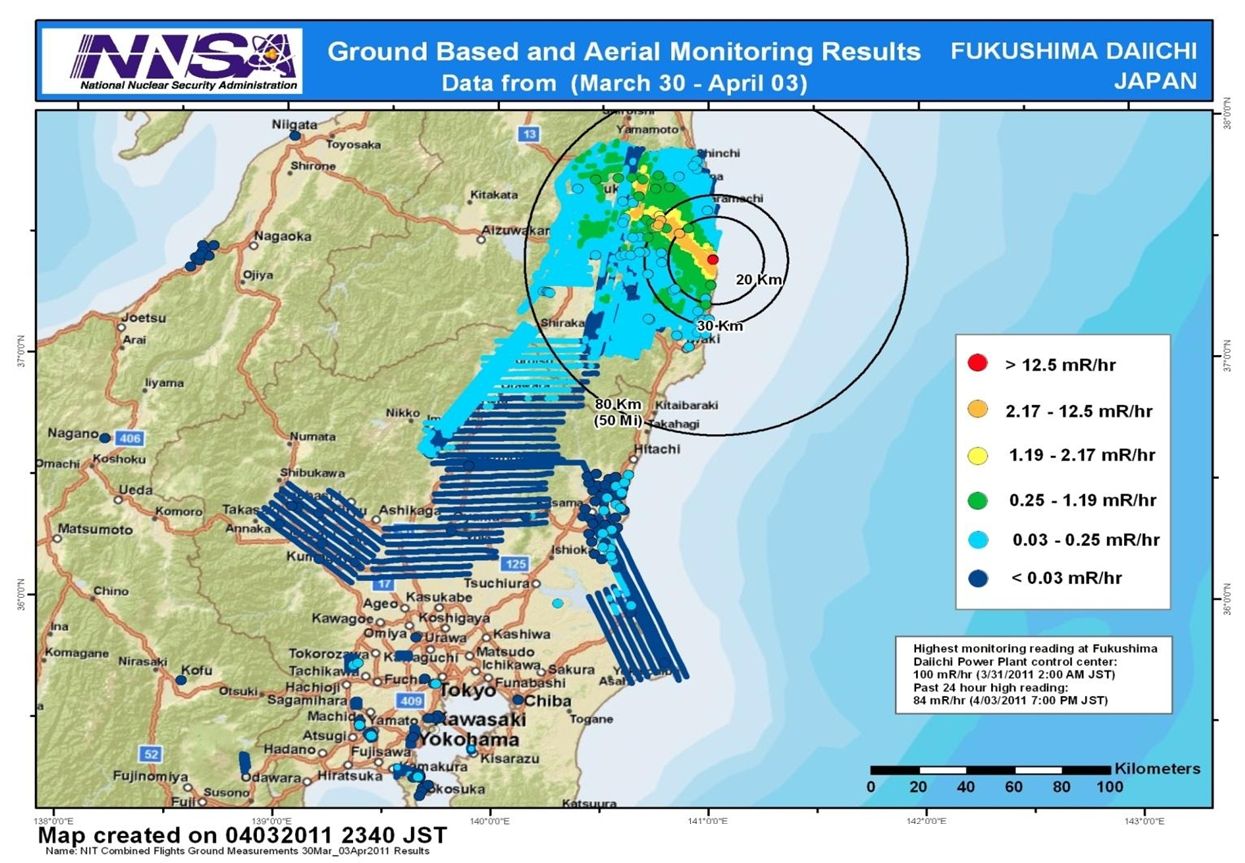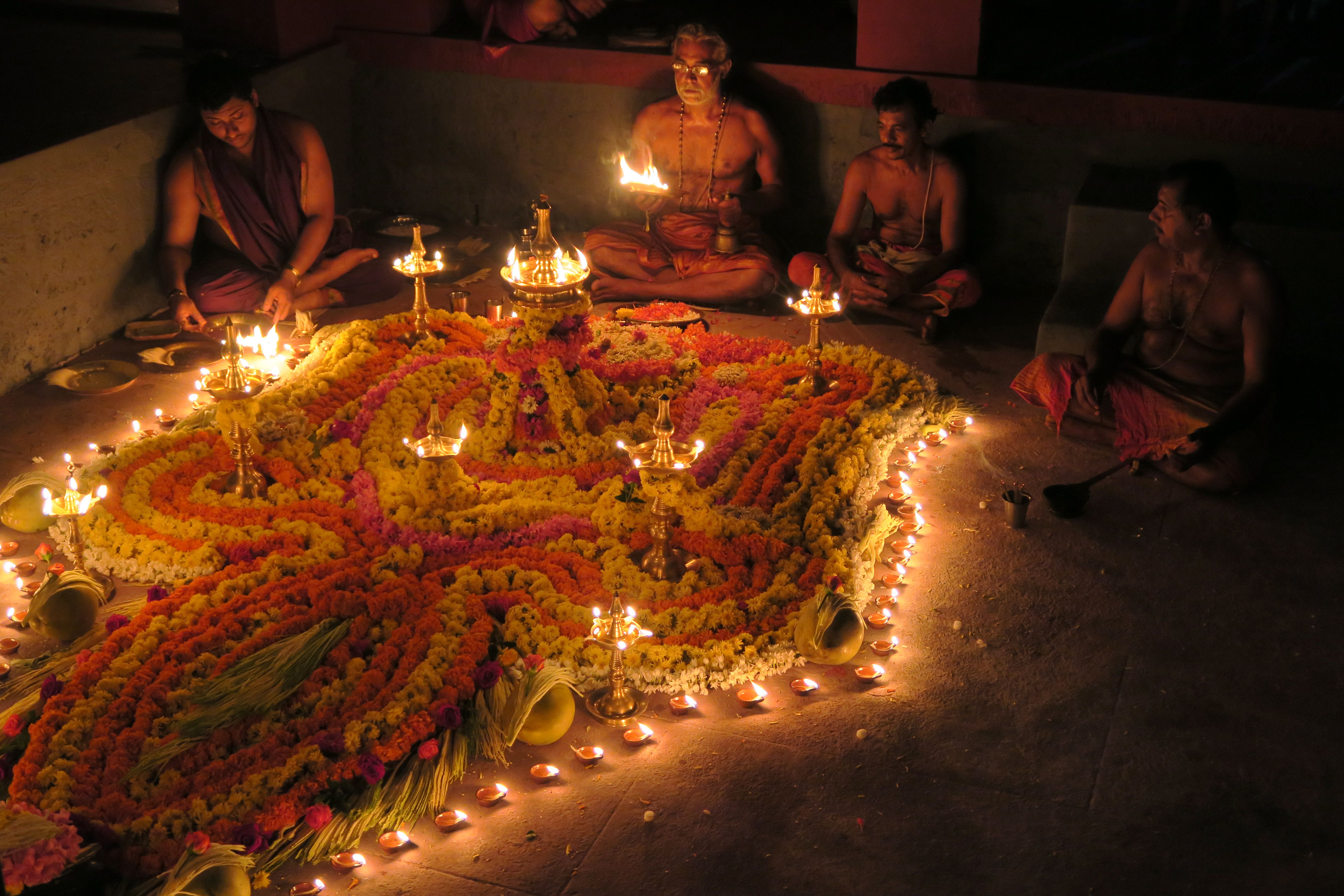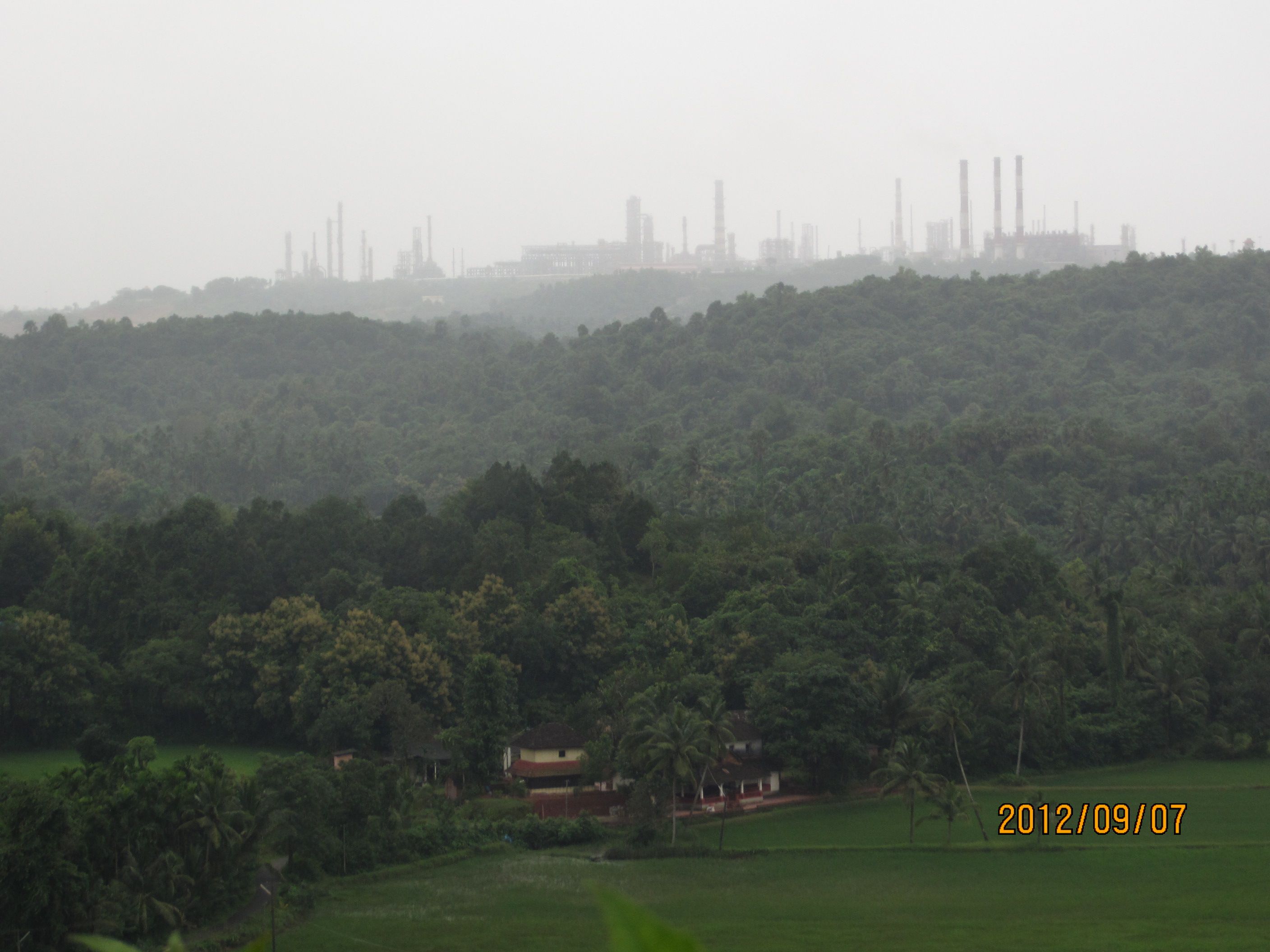Cite as:
Mohacsi, Gergely, Grant Jun Otsuki, Shuhei Kimura, Miki Namba, and Miho Ishii. 2018. “Anthropologies of Science and Technologies in Japan: Topics.” In STS Across Borders Digital Exhibit, curated by Aalok Khandekar and Kim Fortun. Society for Social Studies of Science. August. http://stsinfrastructures.org/content/anthropologies-science-and-technol...

Kumagusu Minakata's painting (1924) in Hashizume, Hiroyuki 2005 Minakata Kumagusu to "koto no gaku."
This essay introduces some of the key topics and frameworks in the anthropological studies of science and technology in Japan. While the topics here are strongly related to the infrastructures, events and external conditions discussed in other parts of the exhibition, this is a non-representative and open-ended list meant to be exteneded in the future.
・STS in Japan, Grant Jun Otsuki
・Medical worlds, Gergely Mohacsi
・Disaster, Shuhei Kimura
・Infrastructure, Miki Namba
・Human–Nonhuman, Miho Ishii
STS Across Borders digital collections are focused through ten shared questions that can be asked across all STS formations so as to enable comparative insight.
...Read more
STS Across Borders is a special exhibit organized by the Society for Social Studies of Science (4S) to showcase how the field of Science and Technology Studies (STS) has developed in different times, places...Read more
Institutionally and intellectually, science and technology studies in Japan has developed at an arm’s length from anthropologies of science and technology, with stronger ties to STS in its traditional Euro-American centers than with anthropology within Japan. At the same time, there have been moments of significant crossover and exchange, both academic—particularly the 2010 4S meeting in Tokyo—and beyond, namely the triple disasters of March 11, 2011.
Medical anthropology in Japan emerged during the 1980s under the strong influence of psychiatry and the interpretive approach (Ohnuki-Tierney 1988, Namihira 1990, etc). It has been developing in a close relation to non-Japanese anthropological interest in contemporary Japanese medicine, in which the diversity of biomedicine has always been a central topic. As a result of these similar fields of interest, since the 1990s many medical anthropologists started to use themes and concepts flourishing in STS. These sporadic studies have revolved around topics such as the gendered constitution of medicine—especially reproductive technologies (Lock 1993, Tsuge 1999)—, the role of local communities in the prevention and treatment of infectious diseases (Ikeda 1992, Shirakawa 2001), the cultural and institutional shaping of brain death and organ transplant (Lock 2002, Yamazaki 2015, Shimazono 2012), the increasing presence of patient activism in chronic conditions (Ushiyama 2015, Tanabe 2008, Kitanaka 2012), and the relationship between bench and bedside (Fukushima 2005, 2010, Suzuki 2018, Tsuge 2007), to mention just a few that generated multiple alliances across STS and medical anthropology during the past three decades.
Margaret Lock’s comparative work, especially on menopause and brain death, and her progressive involvement in and contributions to STS have been an important impetus. Japanese researchers working in developmental contexts, on the other hand, were responding to a growing need for expertise on cultural difference in health-related behaviours. The ethnographic exploration of the multiple worlds of medicine in and out of the clinic has been influenced by Actor-Network Theory and especially the work of Annemarie Mol, whose The Body Multiple has been translated to Japanese (as a part of this series; for an English version of the foreword, see this page)
Among the important hubs of STS-related medical anthropology are Keio University with a strong historical orientation, and Osaka University, where medical anthropologists are part of the Science, Technology and Culture Unit at the School of Human Sciences.
In the past decade, two special issues on medical science and technology have been published in the official journal of the Japanese Anthropological Association, Bunkajinruigaku (see these and other special issues here). “The Body Hybrid” (2011, edited by Goro Yamazaki) is a collection of papers investigating the ways medical innovations enter human worlds through transforming embodied experiences. The second, “Anthropologies of Pharmaceutical Practice” (2017, edited by Yosuke Shimazono, Makoto Nishi and Akinori Hamada) focuses on medicinal drugs to show how they mediate social, political and scientific realms. The papers published in this special issue in Japanese were rewritten and further developed in English for an international workshop in Kyoto in February 2018 and an open panel at the IUAES meeting in July of the same year, both titled “Vital Experiments: Living (and Dying) with Pharmaceuticals after the Human.”
References
Fukushima Masato 福島 真人. 2005. 「制度の中の生(Bios)」『現代人類学のプラクシス:科学技術時代をみる視座』山下晋司・福島真人(編)103–106. 有斐閣 (Life Inside the System (Bios). In Anthropology in The Age of Science and Technology. Masato Fukushima & Shinji Yamashita, eds. Pp. 103–106. Tokyo: Yuhikaku Publishing).
Fukushima Masato 福島 真人. 2010. 『学習の生態学 ―リスク・実験・高信頼性』東京大学出版会 (Ecology of Learning: Risk, Experiment, High Reliability. Tokyo: University of Tokyo Press).
Ikeda Mitsuho 池田 光穂. 2001.『実践の医療人類学: 中央アメリカ・ヘルスケアシステムにおける医療の地政学的展開』世界思想社. (Medical Anthropology of Practice: The geopolitical turn of medicine in Central American healthcare systems; in Japanese). Kyoto: Sekaishiso.
Kitanaka, Junko. 2012. Depression in Japan: Psychiatric Cures for a Society in Distress. Princeton, N.J.: Princeton University Press.
Lock, Margaret M. 1993. Encounters with Aging: Mythologies of Menopause in Japan and North America. Berkeley: University of California Press.
Lock, Margaret M. 2002. Twice Dead: Organ Transplants and the Reinvention of Death. California Series in Public Anthropology ; . Berkeley; London: University of California Press.
Mol, Annemarie. 2002. The Body Multiple: Ontology in Medical Practice. Science and Cultural Theory. Durham: Duke University Press.
Namihira Emiko (ed.) 波平恵美子(編). 1990. 『病むことの文化―医療人類学のフロンティア』海鳴社 (The Culture of Illness: Frontiers of Medical Anthropology. Tokyo: Kameisha; in Japanese).
Ohnuki-Tierney, Emiko. 1984. Illness and Culture in Contemporary Japan: An Anthropological View. Cambridge: Cambridge University Press.
Shimazono Yosuke, Nishi Makoto, Hamada Akinori (eds.) 島薗洋介・西真如・浜田明範編. 2011. 「薬剤の人類学──医薬化する世界の民族誌」("Anthropology of Pharmaceutical Practice,” Special Issue of Japanese Journal of Cultural Anthropology) 81(4).
Shirakawa Chihiro 白川 千尋. 2001.『カストム・メレシン―オセアニア民間医療の人類学的研究』風響社 (Kasutomu Mereshin: An Anthropological Study of Traditional Medicine in Oceania. Tokyo: Fukyo; in Japanese).
Suzuki Wakana. 2018. Ecology of Cells: An Ethnography of IPS Cell Research and Regenerative Medicine. PhD Thesis. Osaka University.
Tanabe Shigeharu 田辺 繁治. 2008.『ケアのコミュニティ: 北タイのエイズ自助グループが切り開くもの』岩波書店 (Communities of Care: The Frontiers of AIDS Advocacy in Northern Thailand. Tokyo: Iwanami Shoten).
Tsuge Azumi 柘植 あづみ. 1999.『文化としての生殖技術: 不妊治療にたずさわる医師の語り』松籟社 (Reproductive Technology as Culture: Listening to Infertility Physicians. Kyoto: Shoraisha; in Japanese).
Tsuge Azumi and Shuichi Kato (eds.) 柘植 あづみ・加藤 秀一(編).2007 『遺伝子技術の社会学』テクノソサイエティの現在、文化書房博文社 (The Sociology of Genetic Technology. Studies of Technosociety Series. Tokyo: Bunka Shobo Hakubun; in Japanese).
Ushiyama Miho 牛山 美穂. 2015.『ステロイドと「患者の知」: アトピー性皮膚炎のエスノグラフィー』新曜社 (The Lay Knowledge of Steroids: An Ethnography of Atopic Dermatitis). Tokyo: Shin-yo-sha.
Yamazaki Goro (ed.) 山崎吾郎編. 2011.「身体のハイブリッド」『文化人類学』("Hybrid Bodies,” Special Issue of Japanese Journal of Cultural Anthropology) 76(3).
Yamazaki Goro 山崎吾郎. 2015.『臓器移植の人類学: 身体の贈与と情動の経済』世界思想社 (The Anthropology of Organ Transplantation: The Body as Gift and the Affect Economy; in Japanese) Kyoto: Sekaishiso.

While the earth sciences have been a major topic for STS in Japan, few STS scholars have focused on natural disasters. Social studies of disaster (environmental sociology, the sociology and social psychology of natural disaster, the anthropology of natural disaster) developed independently. The triple disasters of March 11, 2011, encouraged “newcomers” to join and gave rise to “crosstalk” among scholars from different backgrounds. For example: 1) Virtual forum: How Can We Bring Closure to Crisis?, and a conference Japan's Earthquake and Tsunami One Year Later, hosted by Meridian 180 at Cornell University in 2012, 2) AAA 2013 Roundtable: Narrating the Nuclear, and 3) After 3.11: New Architecture+Engineering and Reframing 3.11: Cinema, Literature, and Media after Fukushima at UC Berkeley in 2014. New projects, approaches, and books emerged from these discussions (see e.g., Too See Once More the Stars, Lessons from Fukushima, and Nuclear Disaster at Fukushima Daiichi).
From the STS point of view, important topics are: the problems of the Public Understanding of Science (PUS) (Ryuma Shineha); the sociology of accidents—which explores the organizational causes of the nuclear accident (Miwao Matsumoto); civic engagements with, for example, the measurement of radiation (Kohei Inose and Yasumasa Igarashi); infrastructure (lifelines, transportation, etc. Shuhei Kimura and Atsuro Morita, see here); and commitments to survivors (health risk, networking of refugees, etc.)
While the anthropological study of infrastructure is a fairly recent and uncommon phenomenon in Japan, there has always been a strong interest in infrastructure among Foucault-inspired urban sociologists who emphasize the way infrastructures work as apparatuses to shape and orient people's lives. In contact with STS in early 2000's, anthropologists began to see the more complex and unpredictable sides of their existence. The Great East Japan Earthquake struck in 2011, and as is often mentioned, infrastructure suddenly became visible to scholars (see here). The following year, the KAKEN four-year project “Environmental Infrastructures: Comparative Ethnographic Study on Nature, Technology and Environmental Change” (PI Atsuro Morita) began. “The project aims at exploring complex interfaces between infrastructure and environment in proliferating international attempts to achieve sustainable management of global environmental changes.” The project connected many scholars through meetings and conferences, and the outcomes of the project can be seen in special journal issues such as “Infrastructuring Environments” in Science as Culture,“Infrastructures as Ontological Experiments" in Ethnos, and the edited volume Infrastructures and Social Complexities (Routledge).
The relationship between human and nonhuman beings has been investigated in anthropological studies on magical-religious practices such as animism, shamanism, and spirit possession. Studies of gift-exchange and personhood have also elaborated important arguments about the unfolding of encounters and interactions between people and others, including nonhuman beings. Moreover, as seen in arguments on the ‘ontological turn’, anthropological studies of unique relations between humans and nature, and of gift-exchange and personhood, have been invigorated through connections to studies on human–nonhuman relations in related fields, including STS. Recent works of anthropology and STS have influenced each other and have widened the range of studies on human–nonhuman relations, networks, and social beings (see Jensen et al. 2017).

In light of such academic trends, I have investigated human–nonhuman relations, focusing mainly on rather ‘classic’ subjects in anthropology, such as spirits, deities, and other magical-spiritual beings. For instance, exploring the making of spirits in Ghana and spirit possession rituals in South India, I investigated how divine worlds can be created, vitalised, and lived by people. Focusing not on cognition and operating through things, but on bodily action with things, I presented a view of the formation of divine worlds as the actualisation of virtual, vital relations between persons and things that emerge only through their contingent coactions (Ishii 2012). I also investigated spirit worship in a special economic zone in India by considering practices of care around specific constellations of nature and infrastructure: fluid, contingent assemblages of the ‘natural’ and ‘artificial’ environments (Ishii 2017a). Moreover, reconsidering the notion of the umwelt presented by Jacob von Uexküll and Victor von Weizsäcker, I investigated how people in South India create and recreate their social, religious, and ecological milieu—or the umwelt—through encounters and interactions with various others, such as colonial officers, developers, and deities (Ishii 2017b). Building on these investigations, I attempt to show the dynamic relations that exist between humans, nonhumans, and their umwelt, and to consider the issue of ‘being in the umwelten’ for both humans and nonhumans.

Ishii, Miho 2012 Acting with things: Self-poiesis, actuality, and contingency in the formation of divine worlds. HAU: Journal of Ethnographic Theory2 (2): 371–88.
---- 2017a Caring for divine infrastructures: Nature and spirits in a special economic zone in India. Ethnos: Journal of Anthropology 82(4):690-710.
---- 2017b An anthropology of the umwelt: Wildness, modernity, and spirit worship in South India. Kyoto Daigaku Gakujutsu Syuppankai. (In Japanese)
Jensen, Casper B. (et al.) 2017 New ontologies? Reflections on some recent ‘turns’ in STS, anthropology and philosophy. Social Anthropology 25 (4): 525–545.